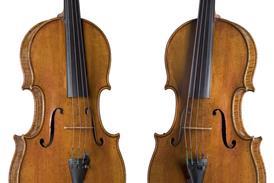- More from navigation items
- Home
- News
- For Subscribers
- Student Hub
- Playing Hub
- Podcast
- Lutherie
- Magazine
- Magazine archive
- Whether you're a player, maker, teacher or enthusiast, you'll find ideas and inspiration from leading artists, teachers and luthiers in our archive which features every issue published since January 2010 - available exclusively to subscribers. View the archive.
- Jobs
- Shop
- Directory
- Contact us
- Subscribe
- Competitions
- Reviews
- Debate
- Artists
- Accessories
Masterclass: Augustin Hadelich on Beethoven’s Violin Concerto first movement - part 1

In the first of two articles, Augustin Hadelich looks at direction and flow in the first movement of this notoriously simple and yet deceptively difficult work
Explore more Masterclasses like this in The Strad Playing Hub
Read more premium content for subscribers here
This is one of the greatest pieces ever written for the violin. Beethoven composed much of it in a high register that makes the sound shine with an incredible purity and transparency, in the traditional concerto form but greatly expanded. That length creates one of its greatest challenges: to sustain the long arc of the musical story, so it does not sound like an endless collection of ‘nice moments’. Through every long line, always have a goal in mind as to where the phrase is going, and always know where you are in the piece. You need to know when to move it along, and when to have moments of rest, so that you can take your listeners with you on this journey.
The work starts with a long orchestral introduction, so the soloist has to stand on stage for several minutes, just listening. I find it helpful to participate mentally during that time; I ‘sing’ silently with the joyous, lyrical theme before the solo entrance, to help me connect. Another way is to play some of the tutti with the orchestra, which is stylistically appropriate and always worth considering in a piece from this period. Either way, engage with what the orchestra is doing, so that you can feel how to shape your entrance naturally.
Already subscribed? Please sign in
Subscribe to continue reading…
We’re delighted that you are enjoying our website. For a limited period, you can try an online subscription to The Strad completely free of charge.
* Issues and supplements are available as both print and digital editions. Online subscribers will only receive access to the digital versions.



























